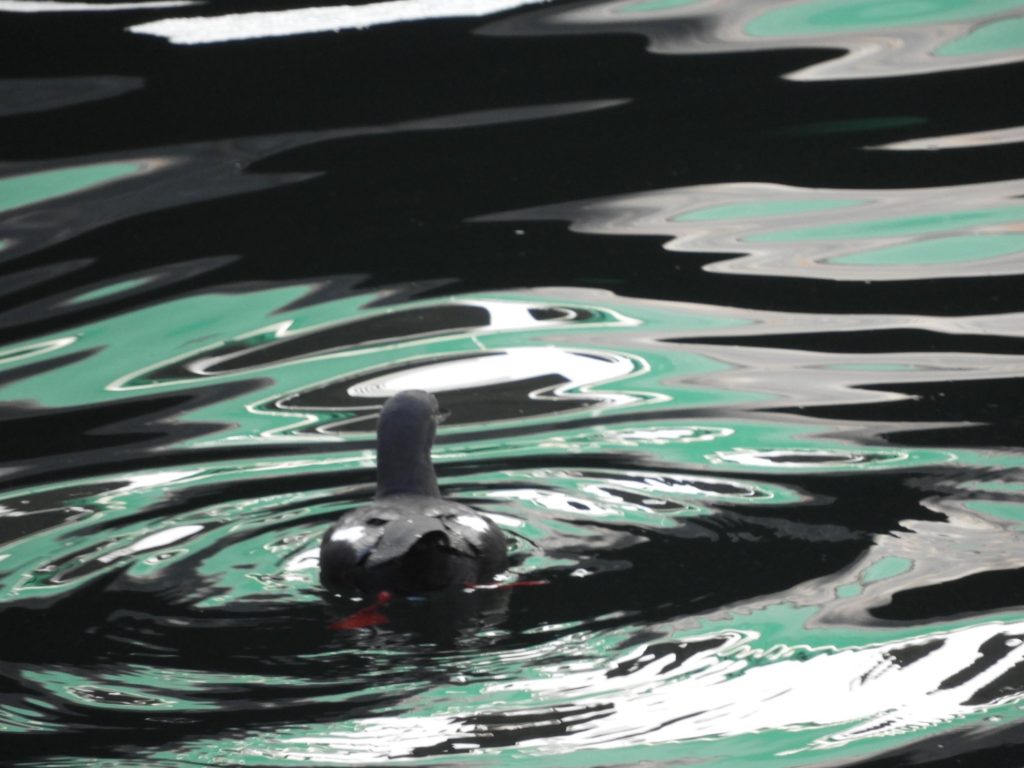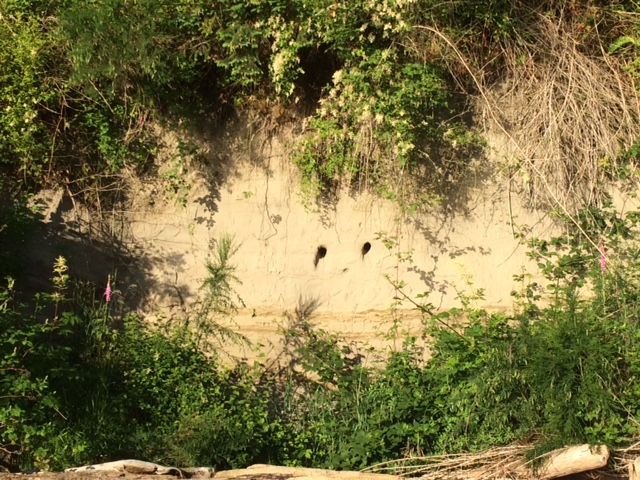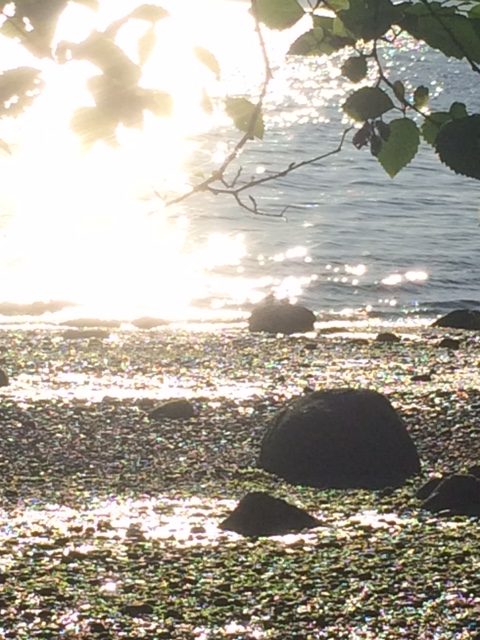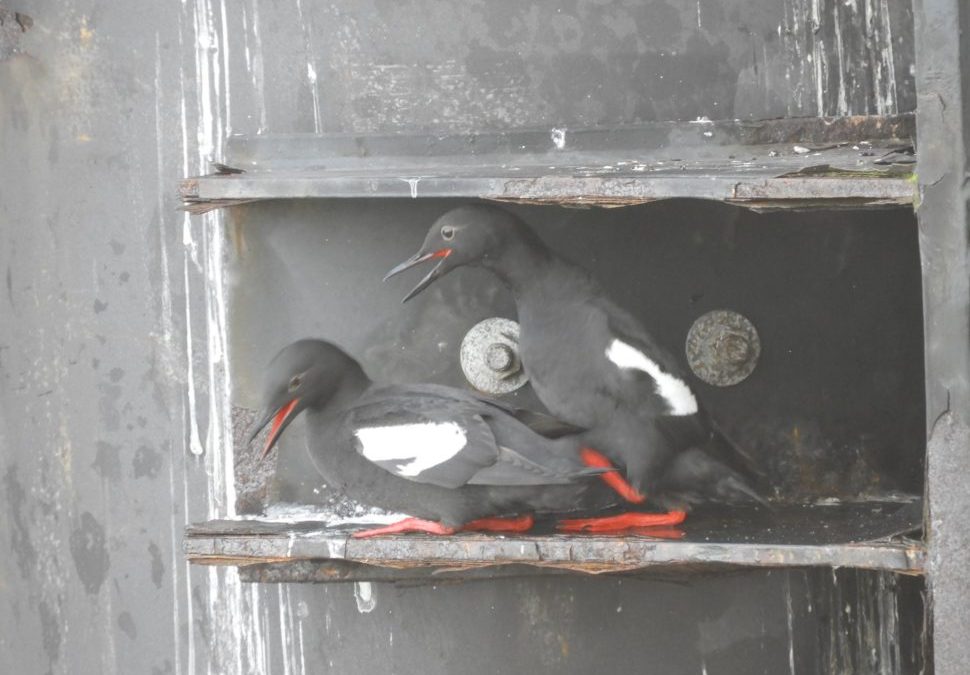Vashon Nature Center (VNC) conducts a variety of community science projects around the island and islanders of all ages volunteer to gather data that contribute to our larger body of scientific knowledge about island plants and animals. VNC chooses projects that have both local consequences and help to answer bigger questions about the entire Salish Sea ecosystem. The center’s goal is to leverage research efforts to create more regionwide change.
Last year, VNC partnered with Vashon-Maury Island Audubon and Whidbey Audubon’s Guillemot Research Group, to join an ongoing study of Pigeon Guillemots, an important indicator species for Puget Sound. Whidbey and other groups like the Nisqually National Wildlife Refuge Nature Center and Fidalgo Bay Nature Center are surveying these birds in other state aquatic reserves so our local data contributes to a regional assessment of Pigeon Guillemot trends across the Salish Sea. VNC was excited to participate because the study aligns so well with its mission in helping to understand better not only Vashon, but the entire Salish Sea. Learn more about the study in this short video.
“We are interested in monitoring Pigeon Guillemots because they connect many pathways within the whole Salish Sea ecosystem and so can act as early warning signs for the health of multiple ecosystem processes. For example, they live here year-round, so their overall health is tied to the health and function of the Salish Sea in all seasons,” says Bianca Perla, director, Vashon Nature Center, and a Pigeon Guillemot monitor. “They eat a huge variety of fish like herring, sand lance, and surf smelt, which are important also to salmon, as well as bottom-dwelling fish like gunnels. And they integrate land and sea by living in marine waters but nesting on land, so they can tell us a lot about both the state of the marine and shoreline ecosystems and the strength of connection between them. Plus, they are so darn cute and fun to watch that it’s enjoyable to monitor them, which keeps us all coming back for more!”

Currently, nine island volunteers spend one hour per week visiting sites at KVI, Point Robinson, and the north-end ferry during a 10-week period each spring/summer to monitor the guillemots and record behaviors including mating, courtship, and prey (food) delivery to young. VNC expanded its survey to include Belted Kingfishers and Northern Rough-winged Swallows, also cliff-nesting birds. The goal of the study is to learn about the locally little-known nesting habits of these birds, and to better understand the role of cliffs in our shoreline ecosystem.
Adria Magrath, a volunteer observer at KVI, shared this story from an especially interesting survey experience on June 10 of this year. The most amazing thing about Adria’s story is that this is the first official record of nesting on Vashon-Maury! Since then, there have been two more instances of food delivery recorded at KVI, which confirms that these birds are actually nesting in our cliffs and not just foraging in our waters. Here’s Adria’s story:
When I went out to the beach early yesterday morning, I stopped at the assigned location, but there was no sign of any Pigeon Guillmots (PiGus)—only a big flock of Canada Geese with goslings. I did notice whitewash on one ledge, but I also saw a group of PiGus at the shore a little to the north, so I walked on further and found a beautiful group of burrows near these birds, so I set up there. There are actually three cliff faces with burrows, and I positioned myself in the shadows between two of them so that I could watch as best I could without disturbing the birds.

At a high tide, you wouldn’t be able to access this site very well and it is a little hard to find a good spot to watch the burrows—partly because the beach is a little narrow and the wrack line went nearly up to the headland. There is a nice tree there providing cover and shade and I crouched in the wrack line in that shade behind a fallen log for 30 minutes before the PiGus came back to shore and approached the burrows. The birds were very watchful and most of them flew a ways out into the water after I arrived. It seemed that I couldn’t even drink from my travel coffee mug without them noticing and watching me. Hence, me crouching behind the fallen log in the shadows.
However, one pair of birds did not seem that shy at all! As soon as I hid, they came to shore, jumped on a nice rock at the waterline about 50 feet away and began dancing and chirping with each other. Within five minutes they were in engaged in a rather extended cloacal kiss—by bird standards. And they kept at it on and off for about 10 minutes until a jogger ran by. They seemed unperturbed by the runner, stayed on their rock, and a few minutes after he passed they were at it again. Randy little PiGus!!

Most of this time the other birds were diving/fishing out in the water, and I could still just see them bobbing and diving with my binocs. About 15 minutes before the end of the survey, they came back close to shore. Before I knew it, one of them flew straight into the shore, cut 90 degrees sideways to follow the waterline (when I could see the prey hanging out of beak), and then cut 90 degrees again and flew straight into a burrow! I was shocked! Excited! I couldn’t move! But I also couldn’t quite see the entire cliff face, so I decided to crawl a few feet along my log in order to see exactly which burrow when the bird flew back out.
After waiting a minute or two, I crawled back over to my sit spot to write it in the data sheet when another PiGu flew into shore in the same manner the first one did, but it entered a different burrow! I did not see prey being delivered this time. I crawled back to where I could see the cliff face clearly and the bird called out for a half minute or so before poking its head out and (at least I thought it was) keeping an eye on me until it dashed back to the water. I stayed there trying to be still for a few more minutes as the rest of the birds swam at the water’s edge into the breaking waves. Finally one more flew straight into a third burrow and stayed there, this time silent after a few initial vocalizations. (Maybe she’s incubating?)
The other birds in the water flew out away from shore and I waited about 5 more minutes. The last PiGu never left the burrow again while I was there.
Learn more about Vashon Nature Center’s community science volunteer opportunities. To volunteer, fill out this contact form. This great article provides more information about the Pigeon Guillemot study.
Featured photo (top of page) by Sherry Lee Bottoms. While waiting for a ferry to Seattle you may have noticed squealing groups of Pigeon Guillemots and their bright crimson feet. As they open wide to deliver their high-pitched calls, you may also catch a glimpse of the insides of their mouths, a matching striking red. Usually burrow nesters, the small spaces created by interlocking supports under the ferry dock provide similar hidey holes.

